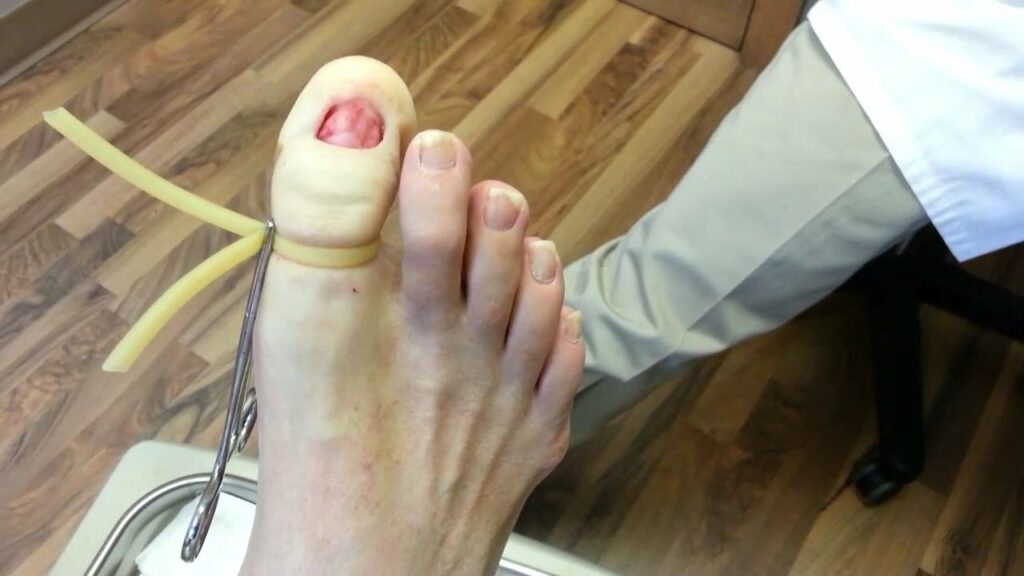When it comes to toenail problems, sometimes the best solution is Permanent toenail removal aftercare. Whether you’ve undergone a surgical procedure or had a toenail removed due to a recurring issue, proper aftercare is essential for optimal healing and to prevent complications. In this article, we will provide you with a comprehensive guide to Permanent toenail removal pros and cons aftercare. From immediate post-removal care to long-term maintenance, we’ve got you covered.
Immediate Post-Removal Care
Immediately after permanent toenail removal, it’s crucial to follow these steps:
Elevate and Rest
Elevate your foot and rest for the first 24 hours to minimize swelling and aid in the healing process.
Apply Ice Packs
Apply ice packs wrapped in a cloth to the affected area for 15-20 minutes every few hours to reduce pain and swelling.
Take Pain Medication
Take over-the-counter pain medication as directed by your healthcare provider to manage any discomfort.
Managing Pain and Discomfort
During the recovery period, it’s common to experience pain and discomfort. Here’s how you can manage it effectively:
Take Prescribed Medication
If your healthcare provider has prescribed medication for pain management, take it as directed.
Apply Warm Compresses
After the first 24 hours, switch to warm compresses to promote blood circulation and alleviate pain.
Soak in Epsom Salt Solution
Soaking your foot in a warm Epsom salt solution can provide relief and help reduce inflammation.
Keeping the Wound Clean
Maintaining cleanliness is essential to prevent infection. Follow these guidelines for wound care:
Gently Cleanse the Area
Use mild soap and warm water to clean the wound gently. Pat dry with a clean towel.
Apply Antiseptic Ointment
Apply an antiseptic ointment recommended by your healthcare provider to prevent infection.
Change Dressings Regularly
Regularly change the dressings to keep the wound clean and dry.
Dressing and Bandaging
Proper dressing and bandaging are vital for protecting the wound and promoting healing:
Use Sterile Dressings
Ensure that the dressings you use are sterile to prevent contamination.
Apply Antibiotic Ointment
Apply a thin layer of antibiotic ointment to the wound before dressing it.
Secure with Bandages
Secure the dressings with bandages to keep them in place.
Preventing Infection
To reduce the risk of infection, follow these preventive measures:
Keep the Area Dry
Avoid exposing the wound to excessive moisture, such as swimming or soaking in water, until it has fully healed.
Wear Clean and Loose-Fitting Socks
Wear clean and breathable socks to prevent bacterial growth and promote airflow.
Avoid Tight Shoes
Opt for comfortable, open-toed footwear to minimize pressure and friction on the healing wound.
Promoting Healing
Help your toe heal faster with these tips:
Maintain a Healthy Diet
Consume a balanced diet rich in vitamins and minerals to promote overall healing and strengthen your immune system.
Avoid Smoking and Alcohol
Smoking and alcohol consumption can impair the healing process. Avoid them during your recovery period.
Practice Good Hygiene
Maintain good foot hygiene, including regular washing and keeping your feet dry.
Managing Swelling
Swelling is common after permanent toenail removal. Here’s how you can manage it:
Elevate Your Foot
Elevate your foot whenever possible to reduce swelling.
Wear Compression Socks
Consider wearing compression socks to provide gentle pressure and minimize swelling.
Avoid Prolonged Standing or Walking
Rest and limit activities that require prolonged standing or walking to prevent further swelling.
Resuming Normal Activities
While recovery times may vary, here are some general guidelines for resuming normal activities:
Follow Your Healthcare Provider’s Instructions
Listen to your healthcare provider’s advice on when it is safe to resume activities such as exercising, sports, and wearing regular footwear.
Gradually Increase Activity Level
Start with light activities and gradually increase intensity and duration as your toe heals.
Pay Attention to Any Discomfort
If you experience pain or discomfort while engaging in certain activities, take it as a sign to slow down and give your toe more time to heal.
Long-Term Toenail Maintenance
Once your toe has fully healed, it’s essential to maintain proper toenail care to prevent future problems:
Trim Nails Correctly
Trim your toenails straight across and avoid cutting them too short to prevent ingrown nails.
Wear Proper Footwear
Choose shoes that provide adequate toe room and support to avoid pressure and friction on the nails.
Keep Feet Dry
Ensure your feet are thoroughly dry, especially between the toes, to prevent fungal infections.
Conclusion
Proper aftercare following permanent toenail removal is crucial for successful healing and to minimize the risk of complications. By following the guidelines outlined in this article, you can ensure optimal recovery and maintain the long-term health of your toes. Remember to consult your healthcare provider for personalized advice and address any concerns you may have.
FAQs
How long does it take for a toe to heal after permanent toenail removal?
The healing time can vary, but most individuals can expect their toe to fully heal within four to six weeks.
Can I shower after permanent toenail removal?
You should avoid exposing the wound to excessive moisture until it has fully healed. Consult your healthcare provider for specific guidance.
Will I be able to participate in sports or physical activities after permanent toenail removal?
With proper healing and clearance from your healthcare provider, you can gradually resume sports and physical activities once your toe has fully healed.
Are there any risks associated with permanent toenail removal?
As with any surgical procedure, there are risks involved. Your healthcare provider will discuss potential risks and complications with you before the procedure.
Is permanent toenail removal the only solution for recurring toenail problems?
Permanent toenail removal is considered when other conservative treatments fail or if the problem is recurrent. Your healthcare provider will assess your specific situation and recommend the best course of action.

